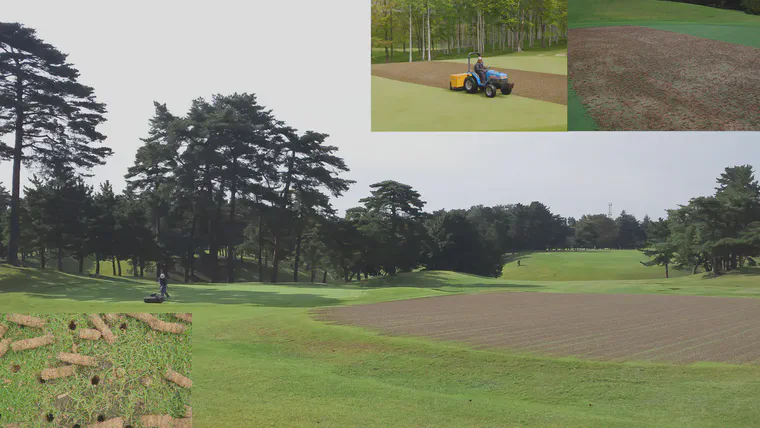Coring: maybe the real benefit is something else?
First some background information. I had shared this post that showed a number of different scenarios of organic matter change with hollow-tine cultivation (coring) and solid-tine cultivation, including examples with and without sand topdressing. The calculations show that coring itself, and the removal of those cores, doesn’t reduce the soil organic matter as much as one might expect.
In response to that, John Reilly replied with a couple tweets, and his comments gave me the idea for this blog post. I paraphrase our conversation here:
From John:
For the amount of mechanical disruption and cost [of coring] should OM reduction be considered a [statistically significant] reason for the practice? Maybe the real benefit is something else?
If there is no to less than statistically significant change to OM after [coring] should [soil organic material reduction] be considered a benefit of the process based on the number. Obviously benefits [of coring] exist.
After reading those comments, I replied with this:
Good point. That gives me an idea for another blog post. I think the benefit is growth stimulation. If that’s needed, then cultivation helps.
So here’s my explanation. I’ll begin with a list straight out of the textbook.
From Turgeon and Kaminski’s Turfgrass Management, chapter 6, page 192:
Benefits of coring include the following:
Release of toxic gases from the soil.
Improved wetting of dry or hydrophobic soils.
Accelerated drying of persistently wet soils.
Increased infiltration capacity, especially where surface compaction or thatch limits infiltration.
Stimulated root growth within the holes.
Increased shoot growth atop the holes.
Disruption of soil layers resulting from topdressing.
Control of thatch, especially where soil cores are reincorporated or where topdressing follows coring.
Improved turfgrass response to fertilizers.
My take on this type of textbook list had been that sure, coring has all these effects, but for items 1, 2, 3, 4, 5, 6, 7, and 9, there are other equally effective ways to accomplish the results, in a less disruptive way than coring. Solid-tine cultivation specifically, and also sand injection and air injection and soil surfactants and so on. For item 8, I used to focus on that, suggesting the control of thatch through organic matter removal with core removal, was the primary reason one would want to core.
Now, I don’t even go that far, because as I have studied the matter some more, I realized that core removal doesn’t reduce organic material as much as I thought.
But as John Reilly pointed out, obviously benefits to coring exist, and maybe OM reduction should not be considered a primary benefit of coring. I note that I once thought it was, but if you note the textbook list above, it’s only “control of thatch” that is listed as a benefit, not exactly reduction of organic matter.
So what do I think is the benefit of coring? It seems obvious to me that the benefit is growth stimulation. If one needs the turf to grow more, perhaps to fill in some thin areas, coring is a great way to accomplish that. If one needs to create larger plants (more belowground biomass, more aboveground biomass), coring is a great way to accomplish that.

And I don’t think that growth stimulation is entirely due to the coring itself. Think of all the maintenance practices that often go along with coring.
- extra fertilizer
- increased supply of water
- reduced mowing frequency
- increased mowing height
- reduced plant growth regular rates
Any of those maintenance practices on their own can lead to more growth.1 All of them together can really give a growth boost to the grass. Plus there’s that boost of mineralization that happens when the soil gets disturbed.
One way of managing turf is restrict growth and put a lot of stress on the turf in between coring events. In that case the coring event could be just the growth burst needed to recover from the stress and to prepare the plants (make them large enough) to handle the upcoming stretch of restricted growth and low mowing and high traffic. I guess that’s kind of the conventional way.
There’s also the management approach of trying to keep the conditions good almost all the time. Trying to have limited growth all the time, but not too low. Hopefully not letting the grass thin out enough that it ever needs the growth stimulation of a coring event. Hopefully not letting the organic material ever accumulate to the level that it needs to be removed by coring and replaced by sand.
The option to core and get that growth stimulation always remains, but I’d like to try to make that intervention as infrequently as possible.
Perhaps reduced mowing frequency would lead to more belowground growth. Reduced mowing frequency in the short term may lead to less aboveground growth. ↩︎